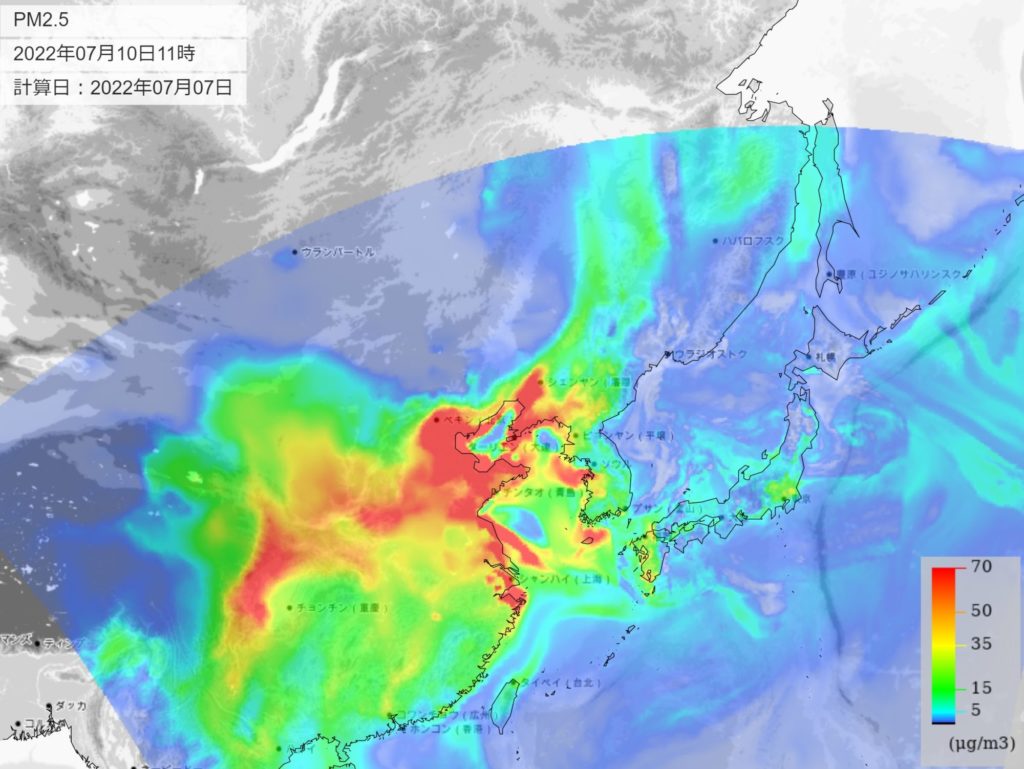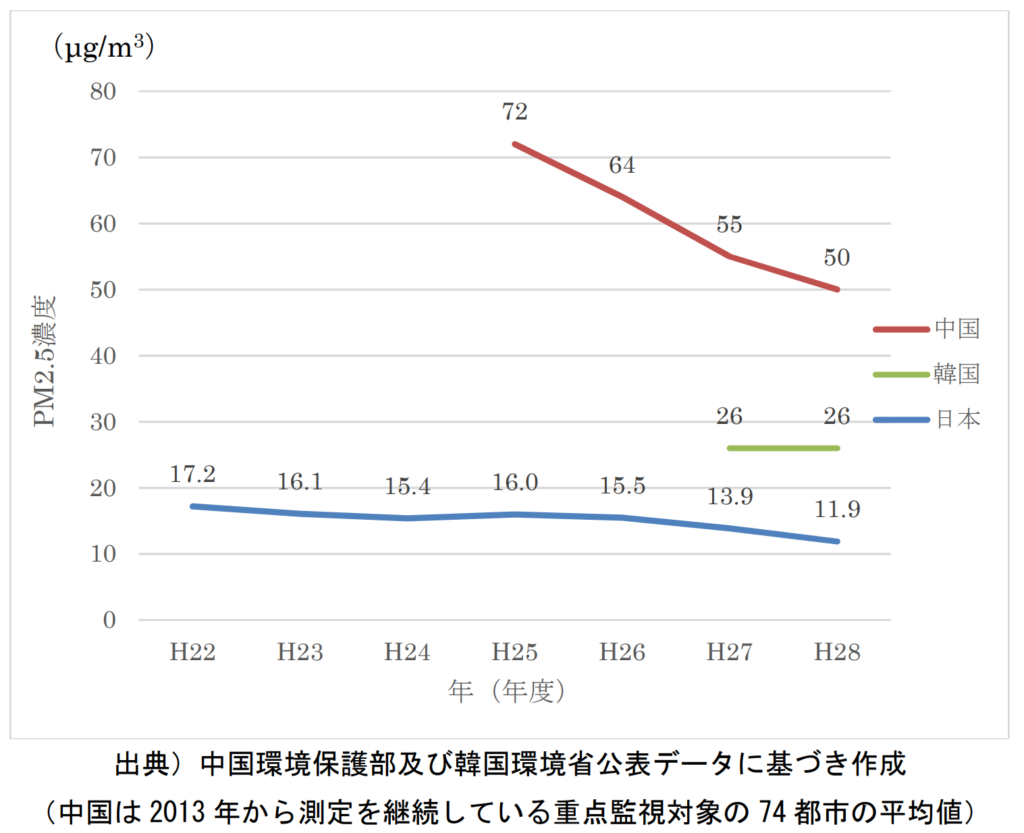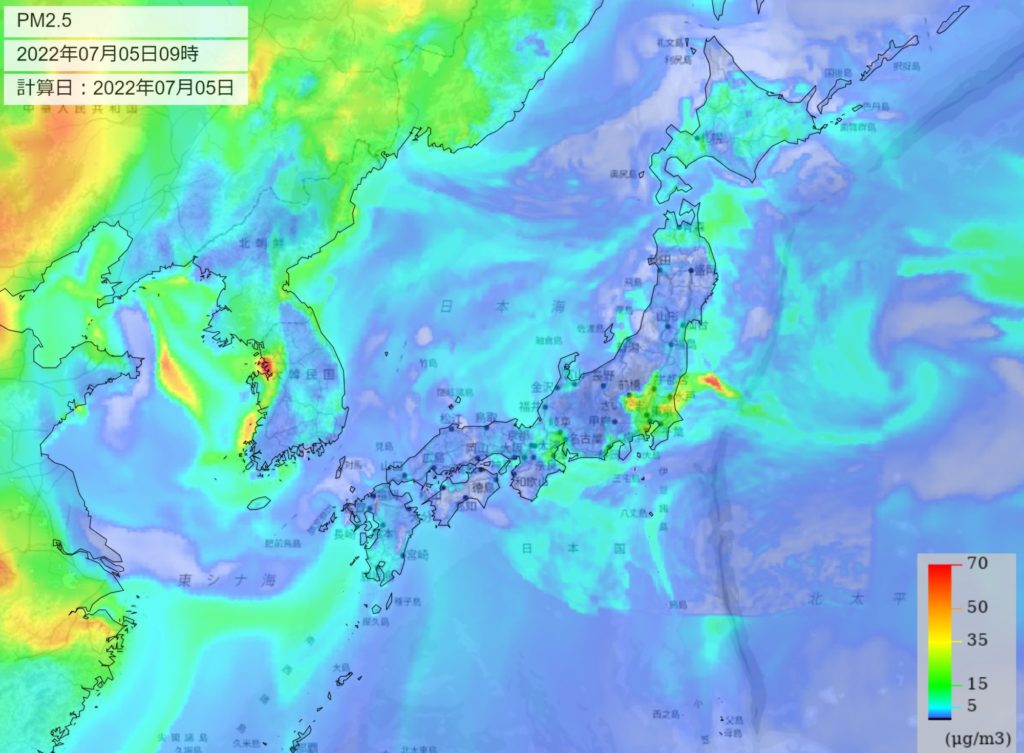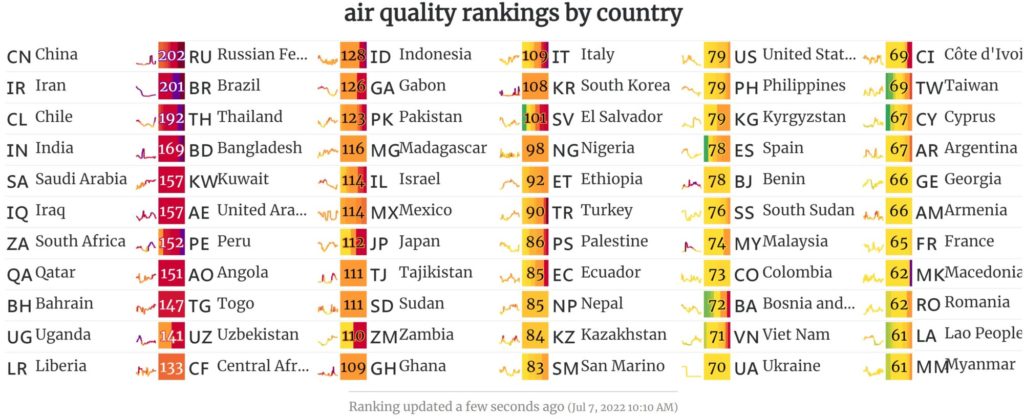目次
WHO Air Quality Guidelines
Annual average value 5 μg / m3 or less
daily average value 15 μg / m3 or less
PM2.5 is a fine particulate matter, which is a very small particle with a diameter of 2.5 μm or less floating in the atmosphere.
The daily average value of 70 μg / m3 is set as the concentration level that is likely to affect health. There are some people with illness and individual differences, and it is said that the effect on health cannot be denied even if the value is lower than this value.


Ministry of the Environment of Japan
PM2.5 is produced by chemical reactions in the atmosphere of substances generated by burning things (artificial origin), substances derived from nature such as soil, volcanoes, and yellow sand (natural origin), and various substances (secondary). PM2.5 is produced by the reaction of these gaseous substances with light and ozone.
PM2.5 can penetrate deep into the lungs, get into the blood, and affect the cardiovascular, cerebrovascular (stroke), and respiratory tracts.
NO2 is associated with respiratory illness, especially asthma, leading to respiratory symptoms (cough, gasping, dyspnea, etc.), emergency outpatient visits and hospitalization.
WHO estimates that each year around the world, more than 13 million people die from avoidable environmental factors.
WHO website
Human respiratory system and particle deposition area (conceptual diagram)


Situation of neighboring countries


Information such as PM2.5 and yellow sand

National Institute for Environmental Studies

This ranking and numbers are changing every moment. The above is the information for 2022/7/7/10:10.
PM2.5 can also be decomposed and removed with a phosphorescent photocatalytic air purifier.
By sucking and removing shoe soles with AIR MAX and adhering to clothes etc., or by decomposing and removing floating PM2.5 with a photocatalyst, it will be possible to continue to maintain safer air.
お気軽にお問い合わせください。090-1050-5159受付時間 9:00-17:00 [ 土・日・祝日除く ]
info@yuhidou.com
